Listen to the Podcast
2 August 2024 - Podcast #893 - (18:43)
It's Like NPR on the Web
If you find the information TechByter Worldwide provides useful or interesting, please consider a contribution.

If you find the information TechByter Worldwide provides useful or interesting, please consider a contribution.
Microsoft is criticized frequently and a firestorm hit Adobe earlier this year when the company modified some of its terms for using Creative Cloud apps. Windows 10 or 11 was running on an estimated 1.4 billion computers, and that is a number from more than two years ago. The number has doubtless increased since then.
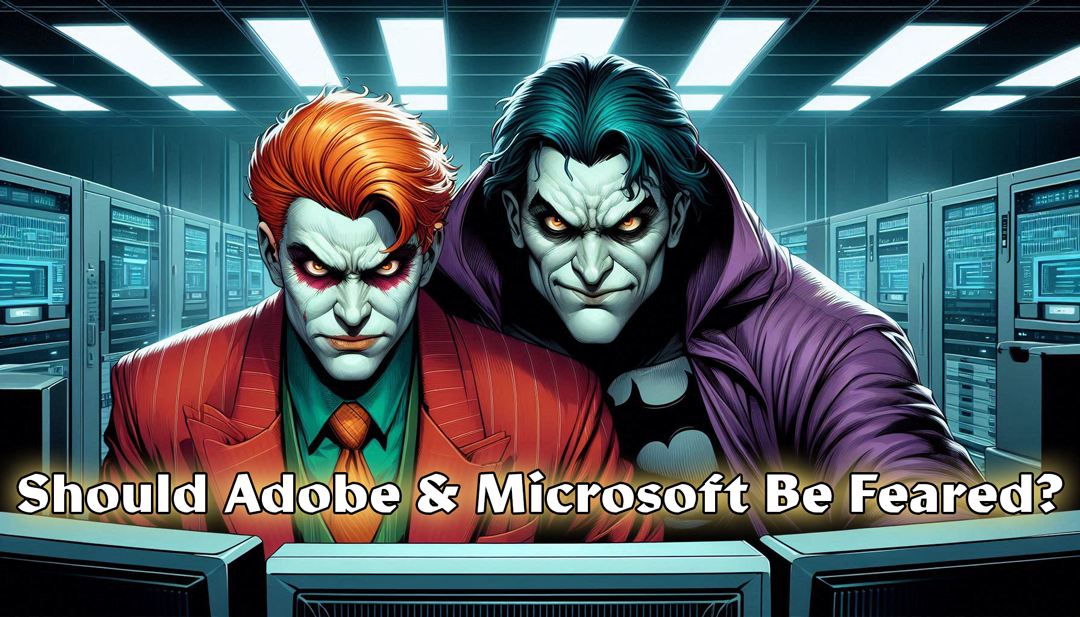
Microsoft also has all but a solid lock on office suite applications. There are competitors, but Microsoft’s office applications are used by 80% to 90% of the market. Wordperfect, Apple IWork, Open Office, Libre Office, Google Workspace, and Zoho have captured only small parts of the market.
Adobe’s market share in the photography software is estimated to be around 70-80%, making it the dominant player in the market. That’s mainly a guess. In publishing, InDesign is believed to have 70% or more of the market share. I haven’t found even a guess for video production or audio editing. The problem for those who would compete with Adobe is that its market share for those who need photography, video, audio, design, and publishing tools is certainly near 100% because no other company offers a range of applications that comes anywhere close. Those who need just photography or who need limited multiple capabilities will find competitors that meet most of their needs. Adobe faces some significant competition, but only in limited scopes so far.
Let’s look at competing products for Microsoft and Adobe applications.
Click any small image for a full-size view. To dismiss the larger image, press ESC or tap outside the image.
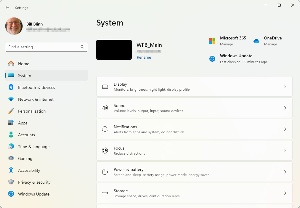 If not Windows, what? You have three basic choices: MacOS, Linux, and Chrome. It’s true that Microsoft has lost some market share, from 91% in January 2013 to 72% earlier this year according to Statista. MacOS has increased from about 8% to 15%. Chrome didn’t exist as an operating system in 2013 and now has about 2% of the market. Linux was under 1% in 2013 and now claims 4% of the operating system market.
If not Windows, what? You have three basic choices: MacOS, Linux, and Chrome. It’s true that Microsoft has lost some market share, from 91% in January 2013 to 72% earlier this year according to Statista. MacOS has increased from about 8% to 15%. Chrome didn’t exist as an operating system in 2013 and now has about 2% of the market. Linux was under 1% in 2013 and now claims 4% of the operating system market.
The MacOS is a fine operating system for home users, but it’s less suited to enterprise use for several reasons. MacOS is incompatible with some applications used in businesses, particularly when the company has created its own applications. Although the MacOS is based on Unix, it is not immune to security threats. Users may develop a false sense of security, which makes exploits more likely. Users have limited hardware and software options because of Apple’s closed ecosystem, which also leads to higher costs. And because the MacOS is less common in business settings, IT support can be harder to find.
Linux shares some of the MacOS’s drawbacks, despite being the operating system that runs half or more of the internet. The first problem potential users encounter is “which one?” because Linux is just the kernel, not the operating system. There are hundreds of Linux variants. Half a dozen or so are viable candidates for business. Linux may not be compatible with proprietary business applications and device drivers for printers are a common problem, and this leads to problems setting up and configuring both hardware and software.
And the Chrome OS is essentially a non-starter for use in enterprises because it lacks support for common applications and relies heavily on an internet connection to access most of its feature. Customization is limited and although Chrome OS security is robust, it lacks advanced protective features, and it is available only on a limited variety of devices.
 Writers and editors use Word. Period. They may despise Word because it has features they don’t need and those features get in the way of writing and editing, but it’s what everyone has agreed to use. For home users, there are economic considerations. Microsoft 365 includes online and local versions of Word, Excel, Powerpoint, Outlook, and OneNote for Windows and MacOS users, limited space on OneDrive, and (for Windows only) the Access database. All of the applications can be installed on up to five computers used by members of the same family, along with mobile versions of some apps for Apple and Android devices. The cost is $100 per year. That’s more than the cost of the free, open source Libre Office and Open Office suites, but far less than the cost of Corel’s competing Wordperfect Office Suite.
Writers and editors use Word. Period. They may despise Word because it has features they don’t need and those features get in the way of writing and editing, but it’s what everyone has agreed to use. For home users, there are economic considerations. Microsoft 365 includes online and local versions of Word, Excel, Powerpoint, Outlook, and OneNote for Windows and MacOS users, limited space on OneDrive, and (for Windows only) the Access database. All of the applications can be installed on up to five computers used by members of the same family, along with mobile versions of some apps for Apple and Android devices. The cost is $100 per year. That’s more than the cost of the free, open source Libre Office and Open Office suites, but far less than the cost of Corel’s competing Wordperfect Office Suite.
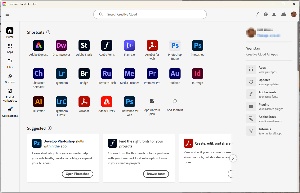 Quite simply, there isn’t any. Users who need some combination of applications for photo editing, website design, publication management and page design, video production, audio editing, creation and editing of PDF documents, media management, illustration, and animation won’t find any competing organization that covers all the bases.
Quite simply, there isn’t any. Users who need some combination of applications for photo editing, website design, publication management and page design, video production, audio editing, creation and editing of PDF documents, media management, illustration, and animation won’t find any competing organization that covers all the bases.
 If there is a market segment where Adobe faces serious challenges, this is it. Affinity Photo, which was recently acquired by Canva, is a powerful photo editing application. It doesn’t (yet) have anything like Adobe’s Firefly technology, but overall it’s easier to use than Photoshop. In part that’s because Affinity Photo has been built from the ground up over the past few years and doesn’t need to maintain backwards compatibility with several decades of previous versions.
If there is a market segment where Adobe faces serious challenges, this is it. Affinity Photo, which was recently acquired by Canva, is a powerful photo editing application. It doesn’t (yet) have anything like Adobe’s Firefly technology, but overall it’s easier to use than Photoshop. In part that’s because Affinity Photo has been built from the ground up over the past few years and doesn’t need to maintain backwards compatibility with several decades of previous versions.
Adobe has improved many Photoshop features and functions, but is then forced to retain options for users to enable the legacy functionality. This must certainly get in the way and slow development even though Adobe has shown mastery of Agile development. Affinity doesn’t have to deal with those kinds of problems and the developers established a common framework that powers its three components — photography, design, and publishing — and a single file format that is used for all three.
Adobe is still the leader and offers tools that professionals and serious amateurs won’t be willing to give up. Affinity Photo will attract users who want to edit their photographs, but who are unwilling to sign up for a subscription program. Probably the application most at risk will be Photoshop Elements.
 There’s no shortage of video editors. The best known are Final Cut Pro (MacOS only), Sony Vegas Pro, and Avid Media Composer. Currently Premiere has about a 50% market share, with Final Cut Pro second at around 30%. Sony Vegas Pro and Avid Media Composer are also-rans with Sony’s product at 10% and Avid’s around 5%. Premiere is popular among both amateur and professional editors and Final Cut Pro has an edge for Mac users. Avid Media Composer is popular in film and television industries.
There’s no shortage of video editors. The best known are Final Cut Pro (MacOS only), Sony Vegas Pro, and Avid Media Composer. Currently Premiere has about a 50% market share, with Final Cut Pro second at around 30%. Sony Vegas Pro and Avid Media Composer are also-rans with Sony’s product at 10% and Avid’s around 5%. Premiere is popular among both amateur and professional editors and Final Cut Pro has an edge for Mac users. Avid Media Composer is popular in film and television industries.
Likewise, several competing audio applications exist, including some that are designed for music production, which is not Adobe Audition’s strong point.
 Adobe InDesign has captured most of the publishing market with at least a 50% market share and perhaps as much as 70%. The most serious competition is probably from Quark XPress, which was an early leader but quickly fell behind InDesign. Affinity Publisher is a good choice for less complex designs, but InDesign’s native functions combined with its ability to add specialized functions with plug-ins has positioned it well for the future.
Adobe InDesign has captured most of the publishing market with at least a 50% market share and perhaps as much as 70%. The most serious competition is probably from Quark XPress, which was an early leader but quickly fell behind InDesign. Affinity Publisher is a good choice for less complex designs, but InDesign’s native functions combined with its ability to add specialized functions with plug-ins has positioned it well for the future.
Adobe also faces some competition here, and also from Affinity by way of its acquisition by Canva. Affinity’s three Photo, Designer, and Publisher applications play well with Canva’s online powerhouse designer website.
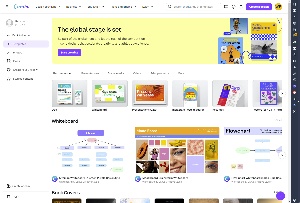 In acquiring Affinity, Canva set its sights squarely on those people who are called on to create visual components for their organization despite having no training in design. When Canva acquired Affinity, Canva’s chief operating officer, Cliff Obrecht, noted that visual communication is critical to enterprises and these needs are core to the future of the business. “The need to create effective and engaging visual content is on the rise,” Obrecht said.
In acquiring Affinity, Canva set its sights squarely on those people who are called on to create visual components for their organization despite having no training in design. When Canva acquired Affinity, Canva’s chief operating officer, Cliff Obrecht, noted that visual communication is critical to enterprises and these needs are core to the future of the business. “The need to create effective and engaging visual content is on the rise,” Obrecht said.
Affinity has around three million users and Canva reports having 135 million monthly users, although the majority of those are using the free plan. About 16 million are paid subscribers. What may be most concerning to Adobe may be the fact that an estimated 85% of the Fortune 500 companies use Canva. Professional designers are likely to feel stifled by Canva’s methods, but those without a design and graphic degree will see the system as a way to create illustrations that are “good enough”.
 There is virtually no competition for Adobe’s website development application, Dreamweaver. Microsoft’s Power Pages is the only true competing application, but other competitors do exist. Online development tools such as Wix, Web.com, Shopify, Site123, and others are more than adequate for many sites, even commercial sites, and most hosting platforms offer WordPress, often at no additional charge.
There is virtually no competition for Adobe’s website development application, Dreamweaver. Microsoft’s Power Pages is the only true competing application, but other competitors do exist. Online development tools such as Wix, Web.com, Shopify, Site123, and others are more than adequate for many sites, even commercial sites, and most hosting platforms offer WordPress, often at no additional charge.
Any organization with the number of users Adobe and Microsoft have is bound to have detractors. It’s not that the companies have never done wrong. Both have made mistakes. Both are guilty of making the occasional boneheaded decision. And both have made decisions that have angered users.
Adobe, for example. Since the very beginning, Photoshop had a problem with resizing images. Unless the user held down a modifier key, dragging to resize failed to maintain the image’s aspect ratio. Then, after decades of doing it wrong, Photoshop suddenly maintained aspect ratio by default. Using the modifier key suddenly allowed the user to stretch the image. Some people (me being one of them) loved the change because it made Photoshop work the way it should have worked all along, the way just about every other application on the planet worked. But there was a sizable group of users who were irate because it ran afoul of their muscle memory. In the next update, Adobe added a setting so that users could choose their preferred option.
But evil? Let’s consider that next.
Are these two software giants evil? I don’t think so. Let’s look at the case for the prosecution, starting with Adobe.
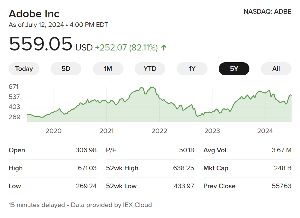 Adobe’s prices are high, and I suspect that even Adobe wouldn’t deny that. But Adobe’s products are designed primarily for business users, and the company spends a lot every year on research and development. Continuous improvement seems to be the motto.
Adobe’s prices are high, and I suspect that even Adobe wouldn’t deny that. But Adobe’s products are designed primarily for business users, and the company spends a lot every year on research and development. Continuous improvement seems to be the motto.
Early in the development of InDesign, I wrote a highly critical review in which I compared Adobe’s product with Ventura Publisher. The product manager offered to fly me to Seattle to meet with developers, but I already had plans to be in Seattle, so I asked him just to pick up the cost of an extra night at the hotel. After meeting with a room full of developers and showing them features Ventura had that they didn’t, I watched over the next decade as many of the features were added to InDesign.
Ventura Publisher was already being discontinued, in part because it ran only on Windows computers, and the main battle was between Adobe and Quark. Still, Adobe took the time to listen and worked to improve the application.
Adobe is also criticized because it has adopted a subscription-based model that some users feel is unfair and restrictive. There is some validity here, but the subscription model, which will probably be used by a majority of software developers eventually, ensures an income stream that the keeps developers employed to continue improving the products.
Lack of competition is another complaint that has some validity. For those who need the wide selection of applications in Creative Cloud, there is no real competition, as I mentioned earlier. For those who need just part of the suite, there may be firms with competing products. But I have seen no evidence that Adobe has acted unethically in establishing its market dominance.
Some users have criticized Adobe for its use of digital rights management (DRM) and strict licensing terms. Adobe is not alone in this regard, and the company does seem to be mostly aiming to play fair with those who use the software and those who offer their work for licensing through Adobe.
The most significant complaints recently deal with Adobe’s data collection practices and privacy policies. At its most basic, Adobe says that those who use the software’s online functionality, much of which is still being developed, should be willing to allow developers to examine both input and output to determine ways to improve the procedures.
Adobe is certainly a tough competitor, but that doesn’t make it evil.
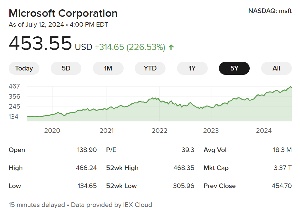 Moving on to Microsoft, the question of monopoly always hangs over the company. Microsoft’s treatment of Wordperfect is one case in point because Microsoft misled Wordperfect into concentrating on OS/2 development, only to pull the rug out from under the Orem company with Windows 95 and its termination of the OS/2 project with IBM. That left Wordperfect in a position that was far behind Microsoft and the company never recovered.
Moving on to Microsoft, the question of monopoly always hangs over the company. Microsoft’s treatment of Wordperfect is one case in point because Microsoft misled Wordperfect into concentrating on OS/2 development, only to pull the rug out from under the Orem company with Windows 95 and its termination of the OS/2 project with IBM. That left Wordperfect in a position that was far behind Microsoft and the company never recovered.
Unlike complaints about high prices, Microsoft’s prices are actually low. Because Windows is ubiquitous, Microsoft can offer unlimited updates for the operating system on any computer. It seems likely, though, that subscription pricing is coming. Subscription pricing is already in place of the Microsoft 365 office suite, but the price is so low that it’s competitive even when compared to open-source applications such as OpenOffice and LibreOffice.
Microsoft has been accused of spying on users because the company collects information about how its operating systems and applications are used. Microsoft claims that the information is used by developers to improve the software and that is mostly true. The company can collect personal information data, but when this happens, it’s mostly a side effect of collecting crash logs that are needed to locate software errors and vulnerabilities.
Finally, there’s the perception that Microsoft forces users to upgrade. This is clearly false because a certain number of users are still running Windows 7, and sometimes even earlier versions. These operating systems no longer receive updates of any sort, but the fact that they can still be used means that updates aren’t forced.
Microsoft certainly isn’t always kind. Certainly it a difficult company to compete with, but it seems to me that it doesn’t quite delve into being evil, at least no more so than any other gigantic, heartless corporation..
TechByter Worldwide is no longer in production, but TechByter Notes is a series of brief, occasional, unscheduled, technology notes published via Substack. All TechByter Worldwide subscribers have been transferred to TechByter Notes. If you’re new here and you’d like to view the new service or subscribe to it, you can do that here: TechByter Notes.